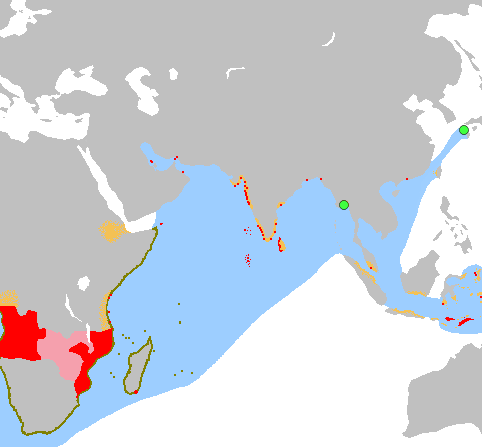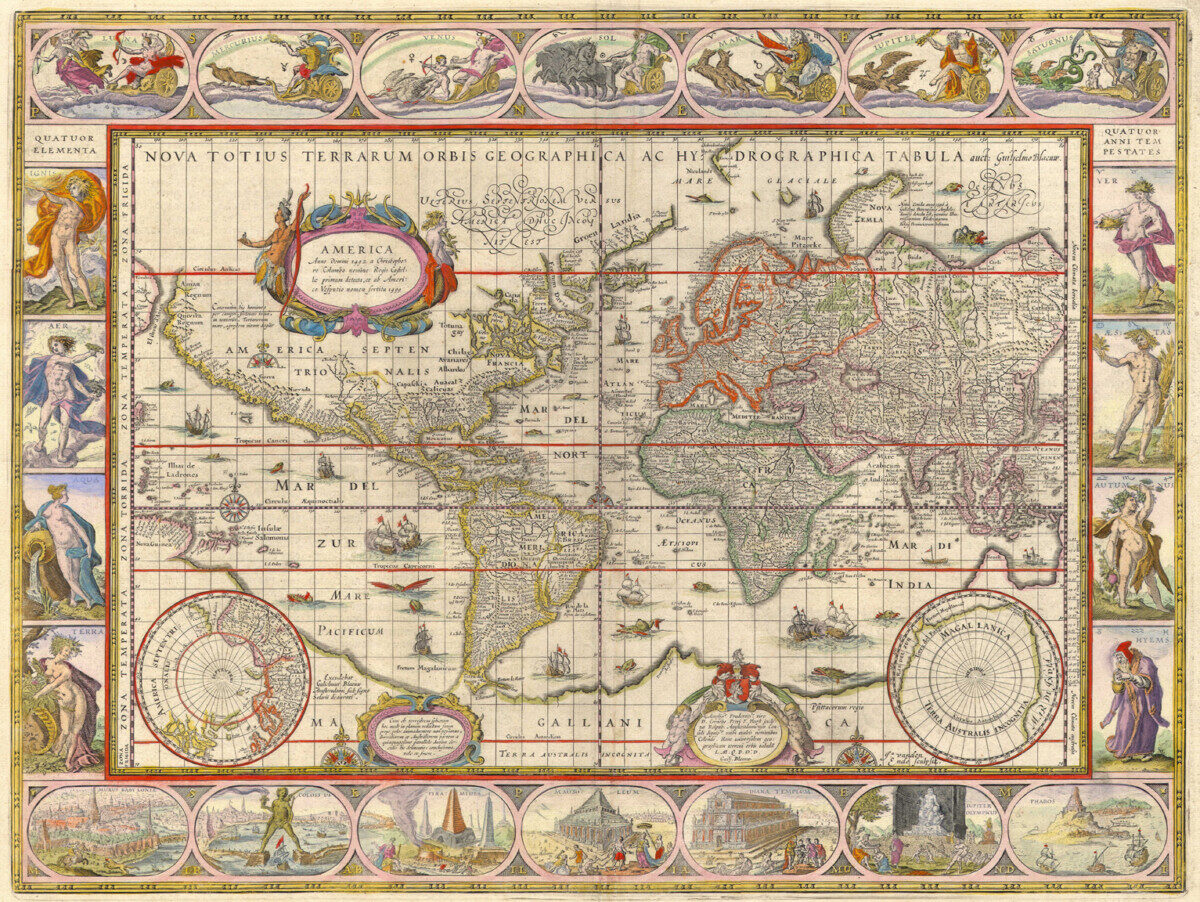One generally perceives global baroque influences as a static phenomenon popularized by missionaries and colonial forces, established as a fixed style that remained prevalent in the region for the few years that the foreign forces were regularly investing in the region. However, looking at Neo-Roman architecture in Goa from the 16 th century to the 18 th century shows that cathedral architecture in the region was dynamic and developed as its own style and incorporated standard practices from its European counterparts, primarily through its façade architecture.
Introduction to Neo-Roman Goa
The coastal Indian region of Goa was the center of Neo-Roman India and was at the cradle of Konkani culture (Pereira, Baroque India 7). It became a metropolis of the Eastern Portuguese Empire in the 16 th and 17 th Centuries. Goa was at the apex of Iberian Christian imperialism, and its influence stretched from the Cape of Good Hope to the Bay of Tokyo. During Portuguese rule, Goa experienced resources from the Portuguese empire being devoted to building architecture suitable to spread Christianity in the Indian peninsula (Pereira, Baroque India 8).

The Konkani style of architecture, notably in Goa, defined Neo-Roman architecture in India. The style incorporates mannerism with baroque, rococo, and neoclassical styles, forming India’s most numerous monumental cathedral structures. We shall examine forms in the Konkani style and how various façade types developed over the years in Goa.

Colonial Prejudice
Goa can be seen as a benefactor of Portuguese rule and an ideal location to study colonial cathedral architecture. However, Portuguese investment in Goa was focused on funding imperial expansion and not the needs of Goan locals. The Portuguese continued to discriminate against indigenous Indians and even converts and maintained a sense of racial superiority over their subjects, and considered them “cowardly, weak, and effeminate.” (Pereira, Baroque India 9)
The Jesuit historian Francisco De Sousa (1649-1712) said of Indians, “[…] so deeply rooted in their faith, so polite in their behavior, and so well-mannered, that if they had been a little fairer in complexion, and more generous at heart, they would in no way be inferior to the Portuguese”
(Pereira, Baroque India 9).
Colonial Influences

The Portuguese were also not the only ones to influence Baroque India. The Indian subcontinent underwent many imperial interactions and periods of imperial rule, each of which left a mark on architecture in the region. The six European groups of influence were: The Luso-Indian and The Italo-Indian, popularized by the Portuguese, The Franco-Indian, popularized by the French, The Batavo-Indian, popularized by the Dutch, The Dinamarco-Indian, popularized by the Danish, and the Anglo-Indian, popularized by the English (Pereira, Baroque India 134). However, this paper will focus on the influence of The Luso-Indian and The Italo-Indian styles, as the Portuguese were the most significant contributors to Indian baroque architecture (Pereira, Baroque India 105).
Portuguese Neo-roman Style in Goa
The Luso-Indian and Italo-Indian styles popularized in Goa by the Portuguese showcase the intermingling of indigenous cultural practices with cathedral architecture through the mid-16 th to the mid-18 th Centuries.

The Luso-Indian and Italo-Indian styles popularized in Goa by the Portuguese showcase the intermingling of indigenous cultural practices with cathedral architecture through the mid-16th to the mid-18th Centuries. The Goan churches initially followed models of the hall church from the domed basilica model of the Valladolid Cathedral in Spain, the Greek cross model from Michelangelo’s St. Peter Cathedral, and the Italian church façade model from The Church of the Gesù in Rome (Lourenço 8).



Later, the Indian style of the Neo-Roman emerged, which took the features from the listed models of Neo-Roman churches and added indigenous features to them. These included the following:
The Diminuted Sanctuary Church: A single large nave opens into a smaller, lower, narrower sanctuary. The large nave appeared in Europe but was mainly adopted in smaller churches in India because single naves appeared in Hindu temples (Pereira, Churches of Goa 28).

The reticulated façade: The façade included grid compartments created using orders with pilasters or columns crowned with entablature. This gridding resulted in multiple bays and stories to create a monumental façade that was also a Hindu temple principle (Lourenço 8).

Flexible proportions: Classical orders were modified by the mannerists to match the flexible modulation of the Indian temple (Lourenço 8).

Indian motifs: Pots, lotus, myrobalan, animals, fruits, and plants were used alongside European motifs (Lourenço 8).

These features show how Neo-Roman was being developed as its style of architecture in Goa. It was taking elements from Europe and blending them with Indian features to show the flexibility of baroque styles.
Facades of Goan Churches
These general Indian Neo-Roman features were complimented by façades that were especially important to the church, along with its iconography and grandeur. The façade was significant to Indian society and, thus, formed a focal point of church architecture. Six typical façades in Goan churches complement European styles and developed through the Portuguese rule of its colonies, as discussed chronologically.
The first type was the peaked gable façade. Early churches built before 1590 were unsophisticated and somewhat manneristic—two-story high façades surmounted by an enormous triangular roof and an oculus. The large single bell tower had no openings other than the belfry arches in the elevation. Sparse and devoid of ornamentation, these churches were the first under Portuguese rule (Lourenço 14).

The Gothic form of medieval architecture also made its way to Goa as the second type of façade, the Neo-Gothic façade. However, the gothic expression was limited to the cosmetic treatment of the façades with arched, pointed openings and the slender shape of the towers. These churches lack the interior elevations, ribbed vaulting, and flying buttresses of European gothic churches, except for the Our Lady of Rosary at Old Goa, built in 1543, which does have rib vaults and a buttressed tower façade (Lourenço 21).

The third form of façade that was common in the mid-18th Century Goa was the Pozzoan pediment façade (Lourenço 17). The pediment in such churches is a Baroque pediment motif named after the Late Baroque architect Andrea Pozzo (1642-1709). Such pediments can be found on many Goan churches as complementary parts of another façade type, such as Holy Cross Church, Cavelossim, built in 1763.

Late baroque extensions such as the Rococo style also became prevalent in Goan churches which was the fourth type of façade and became famous in the late 18th century. Rococo has little influence on Goan churches apart from the cosmetic treatment of the gable front pieces (Lourenço 19). Rococo style was particularly favored by the Franciscan colony of Bardez in Go, as seen in St. Jerome Church, Mapusa, Bardez, Goa rebuilt in 1839 after a fire burned the old church.

Following the early churches with peaked gables, there was the development of the fifth type, the Cupoliform façade style, which was distinctively a Goan innovation. In this style, a rounded wall and dome shape elevation replaced the roof. The façade is made of solid masonry but gives the illusion of a three-dimensional dome, apart from the Our Lady of Divine Providence in Old Goa, a Greek cross-domed church with an actual dome (Lourenço 15). The style continued to be important to the Portuguese Goan churches, with examples dating from 1677 to 1767.

The templet façade, like the Cupoliform style, continued to remain in fashion through Portuguese rule in Goa. It imitates a classical Roman temple. An aedicule, a window framed by columns with a pediment on top, frames the opening at the top of the façade, framing an opening with pilasters (Lourenço 20). The style can be seen in the famous Basilica of Bom Jesus, Bainguinim, Goa, built in 1597.

Even though this paper focuses on the early introduction of Baroque architecture to Goa and the various façade styles, there were many more nuances to cathedral architecture in the region. Manneristic, Baroque, Rococo, and Gothic styles gradually developed along with other Indian architectural practices on the interior of the church naves and choirs. There was also the influence of other cultures, such as the French, Danish, Dutch, and English, that we could not discuss in detail. This vast expanse of Baroque Indian cathedrals shows how the style of the Indian church developed over time and included many nuances, like its European counterparts. Goa is an example of global baroque through which people might recognize the artistic value behind churches worldwide.
Here is a link to my digital tool for this project: https://arcg.is/0LrTvz0
Bibliography
Lourenço José, and Fernandes Pantaleão. The Parish Churches of Goa: A Study of façade Architecture. Amazing Goa Publications, Goa, India, 2005.
Pereira José Fernandes. Baroque India: A Global Stylistic Survey: The Neo-Roman Religious Architecture of South Asia. Indira Gandhi National Centre of the Arts, New Delhi, Delhi, India, 2000.
Pereira José. Churches of Goa. Oxford University Press, New Delhi, Delhi, India, 2002.
Picture Credits
Antao, Steve. “The Legend Our Lady of Ajuda Church in Ribandar.” ItsGoa, 18 Oct. 2021, https://itsgoa.com/legend-of-our-lady-of-ajuda/.
“Every Year of Indian Colonialism.” YouTube, YouTube, 12 Nov. 2015, https://www.youtube.com/watch?v=yD0dt_f8DIc.
“Holy Cross Church, Cavelossim, Goa.” Goan Churches, https://goanchurches.info/church/holy-cross-church-cavelossim-goa/.
Lourenço Jose. “Peaked Gable Churches – Simple ‘Masses’ !” Goan Architecture, https://goanarchitecture.blogspot.com/2007/12/peaked-gable-churches-simple-masses.html.
All other images were open-sourced.
